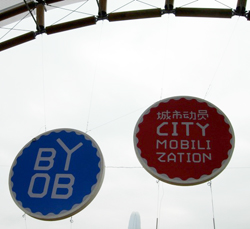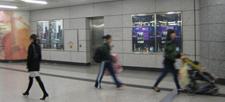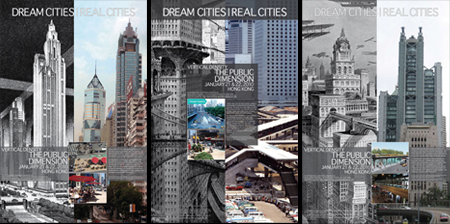The Skyscraper Museum is devoted to the study of high-rise building, past, present, and future. The Museum explores tall buildings as objects of design, products of technology, sites of construction, investments in real estate, and places of work and residence. This site will look better in a browser that supports web standards, but it is accessible to any browser or Internet device.

The 2008 exhibition at The Skyscraper Museum Vertical Cities: Hong Kong | New York examined the parallels during two major development booms and defining moments in the vertical identity of each city: New York in the 1920s and 1960s and Hong Kong in the mid-1980s-1990s and today. During these periods, each city grew rapidly to its peak populations of around eight million, ascended skyward, and became ever more dense. In both, development was largely entrepreneurial and speculative, producing their wildly competitive and heterogeneous skylines.
Many of the visionary ideas that New York architects proposed in the 1920's came to fruition decades later in Hong Kong. Raymond Hood's or Hugh Ferriss's ideas of tower clusters linked by high-speed public transportation can be seen now in Hong Kong projects like the International Commerce Center, and the elevated walkways, multilevel transit, and mid-level escalators echo Harvey Wiley Corbett's dream of multi-level transit. Hong Kong, in many ways, can be seen as a "hyper New York," where the ideas and dreams of New York's early 20th century architects were enacted and surpassed.


From left: In 1930, New York architects and planners imagined high-rises and highways on a track of land then occupied by dense tenement housing: "The Proposed Chrystie-Forsyth Parkway," from The Regional Plan of New York and its Environs, 1930. An eclectic mix of slender towers line Gloucester Road, evoking early dreams of a future New York.
A 1908 cartoon in the popular magazine pictured a future New York so densely developed that the ground plane disappeared: William R. Leigh, "Great City of the Future," Cosmopolitan, November 1908.
In the 1960s, Hong Kong began to develop a system of elevated bridges that realized the prophecies of New York architects. Pedestrian Bridges in Hong Kong's Central district, photograph by P & T Architects & Engineers Ltd.
"King's Dreams of New York," from the popular souvenir book of 1911-12 foresees downtown's building canyons connected by rooftop traffic bridges.
Mutliple levels of traffic on roads, overpasses, and bridges lace the business district near the HSBC headquarters.
Thank you to Connie Lee and Bernard Chang of KPF for production assistance.


